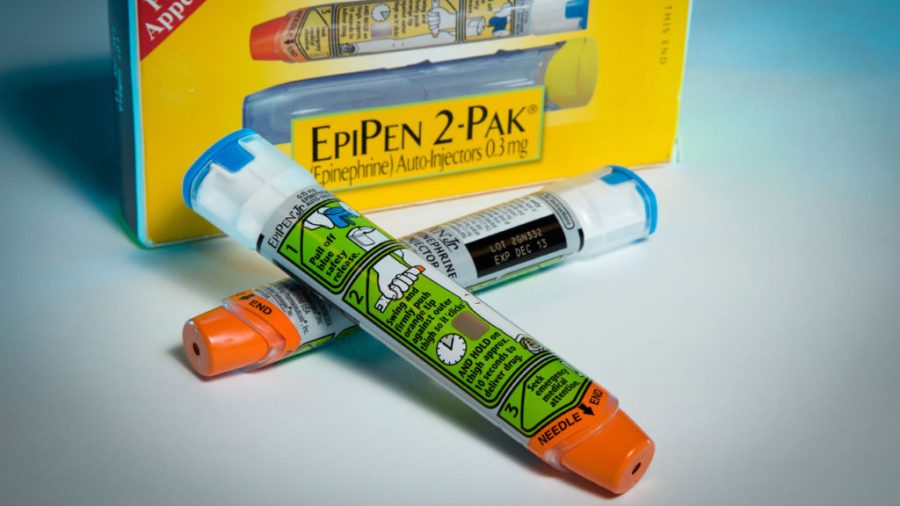The Epi-Pen Scare
November 1, 2016
Imagine having to pay hundreds of dollars for a band aid every time you fall and scrape your knee.
Imagine a small mistake: accidentally eating a peanut, getting stung by a bee, or wearing the wrong kind of metal, threatening your life. Lucky, medicine has advanced so much that a portable, easy-to-administer shot of epinephrine can usually save you from an allergic reaction turning deadly.
The downside to this is the fact that pharmaceutical companies have recognized and taken advantage of just how dependent people have become on epi-pens. But of course people depend on them- they are literal life savers. In 2007, a two pack of pens cost ninety four dollars. This same pack has shot up to a price of over six hundred dollars, far more than most can afford.
This isn’t the first time pharmaceutical companies have taken advantage of people’s medical misfortunes. In the 1980’s, they made HIV and AIDS medications for patients unaffordable. Prices for cancer treatments are through the roof. And the worst part? People can’t walk away from these treatments or medications.
There is very rarely an alternative. However, many people with deadly allergies have taken to a new technique. People are purchasing their own epinephrine and needles, self-administering doses based on a rough estimation, and using these doses in place of epi-pens. An “epi-pencil”, if you will.
In an emergency, this is extremely dangerous. Most people can’t guess how much a proper dosage is. Many don’t know how deeply to insert the needles. Add a high stakes situation to the equation and you’re asking for trouble.
While generic versions have been made available, there have been many concerns about their safety and effectiveness, as there was a recall following their release due to improper dosing. Patient assistance is also now being offered, but meeting the qualifications isn’t necessarily easy. The patient must be a US citizen, have a yearly income below 400% of the poverty guidelines, not possess any form of prescription coverage , etc, etc. A majority of those who need these lifesaving devices have found themselves between a rock and a hard place.
